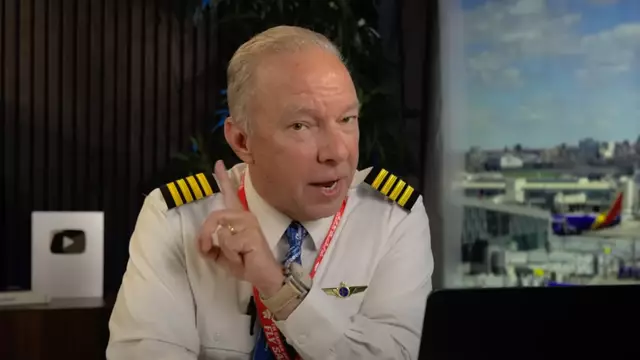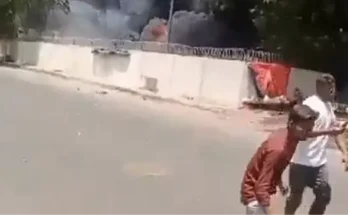An aviation expert has said there is evidence from the video of the crash that supports a particular theory, and he broke down what he believes happened.
An Air India flight, that was attempting to leave Ahmedabad last week on June 12 on its way to London, Gatwick, crashed only moments after leaving the airport.
The Air India flight was carrying 242 passengers and crew members on board and of these, 169 are Indian nationals, 53 are British nationals, 1 Canadian national and 7 Portuguese nationals.
The seemingly sole survivor of the plane crash was a British national, 40 year-old Vishwash Kumar Ramesh.
Tributes have flooded in from all around the world and authorities have insisted they will find out what the cause of the crash was.


Authorities have launched an investigation to discover the cause of the crash (Siddharaj Solanki/Bloomberg via Getty Images)
While investigations get underway, aviation experts have weighed in one what they believe could have been the cause of the crash, studying the limited footage and information currently available.
Captain Steve Schreiber, a commercial airline pilot and YouTuber recently made a video discussing a new theory that he believes is supported in the video footage of the plane moments before it crashed down to the ground.
In the video he said he believes the plane suffered double engine failure and was unable to generate enough power to lift off and elevate into the sky.
He said: “I’m going to show you something and explain it because it is a total game changer.
“Right there, my friends, take a look, a lot of people have been talking about the RAT had deployed, what is a RAT?”
Captain Steve showed a freeze frame of the Boeing 787 Dreamliner plane seconds before the crash, with a part of the plane’s belly circled.
He said from the footage it appeared as if the RAT, ram air turbine, had deployed and explained how it works.
He said that on this type of aircraft, the RAT is automatically deployed under one of three conditions: “A massive electrical failure, a massive hydraulic failure or a dual engine failure.”


Captain Steve broke down the ‘evidence’ he says points to the cause of the crash (Captain Steve/YouTube)
He continued: “It looks like a little Evinrude motor, it’s a little two-bladed prop. Its function is to provide electrical and hydraulic pressure for the aircraft in an extreme emergency.
“The purpose of the ram air turbine is to provide electrical and hydraulic pressure for the aircraft in an extreme emergency.”
He added that the small dot, circled in his video, is evidence that the RAT was deployed, however he added that it is not designed to be deployed at such a low altitude.
He also said: “It is evidence for us it was dual engine failure, most likely. It could have been electrical issue, it could have been hydraulic issue, it could have been either one of that. But I think the fact the airplane is mushing out the sky gives the idea it was a dual engine failure.”
While the captain is confident in his assertions, at this point, it is only a theory, and Indian authorities are yet to confirm or announce what they believe was the cause of the crash.
Featured Image Credit: Captain Steeeve/YouTube
Topics: Air India, Plane, India, News, World News
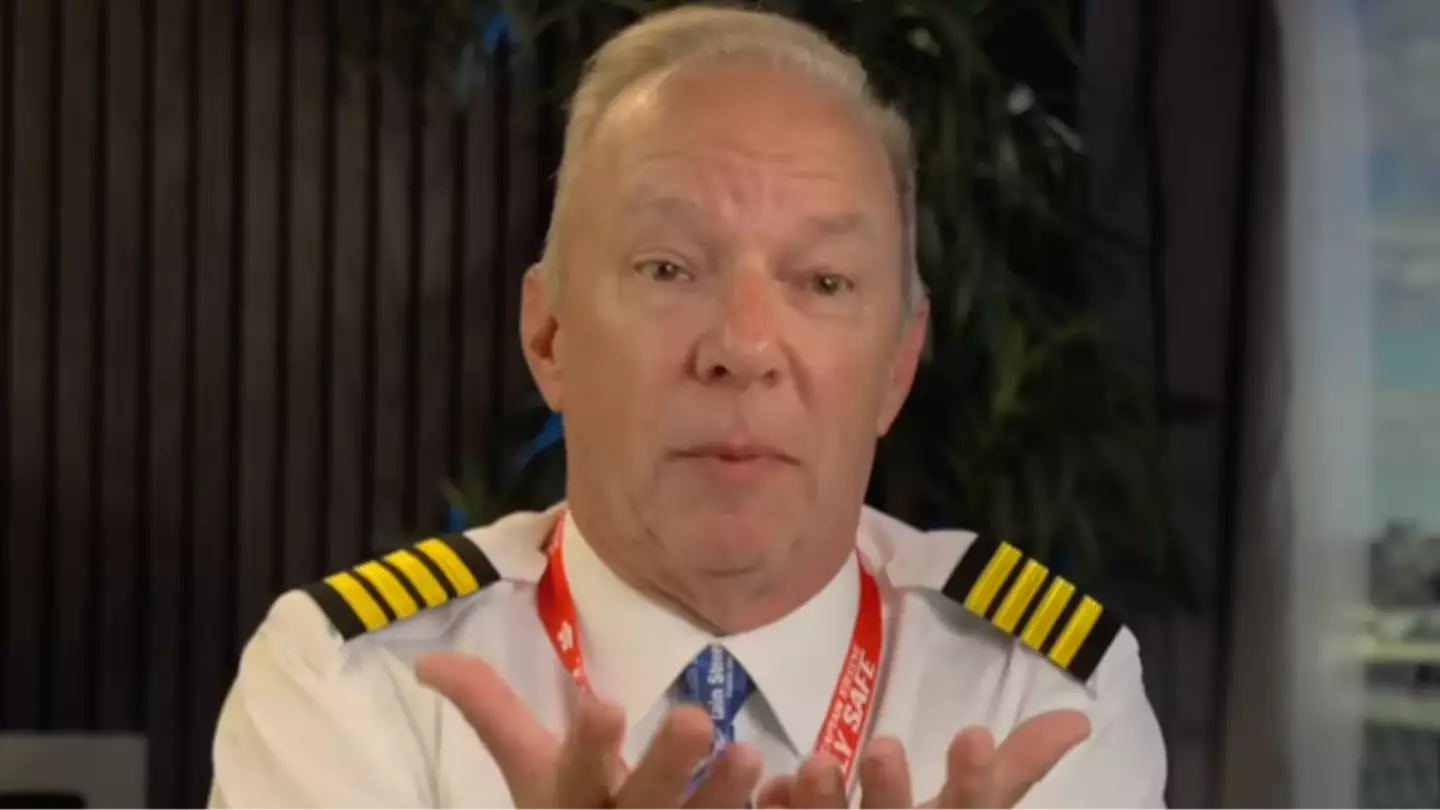

A pilot has gone through some of the possible theories that saw the Air India jet crash before explaining what he thinks really went wrong.
On Thursday (June 12), a 40-year-old British man became the sole survivor of an Air India flight that crashed into residential buildings in Ahmedabad, mere moments after it set off.
The London-bound flight killed all other 241 passengers and crew, as well as dozens more on the ground, in the fatal collision.
The authorities are still investigating what went wrong with the doomed aircraft, but it is believed the captain, Sumeet Sabharwal and his co-pilot Clive Kundar, were extremely experienced. A mayday call was also issued by Captain Sabharwal almost immediately after takeoff.
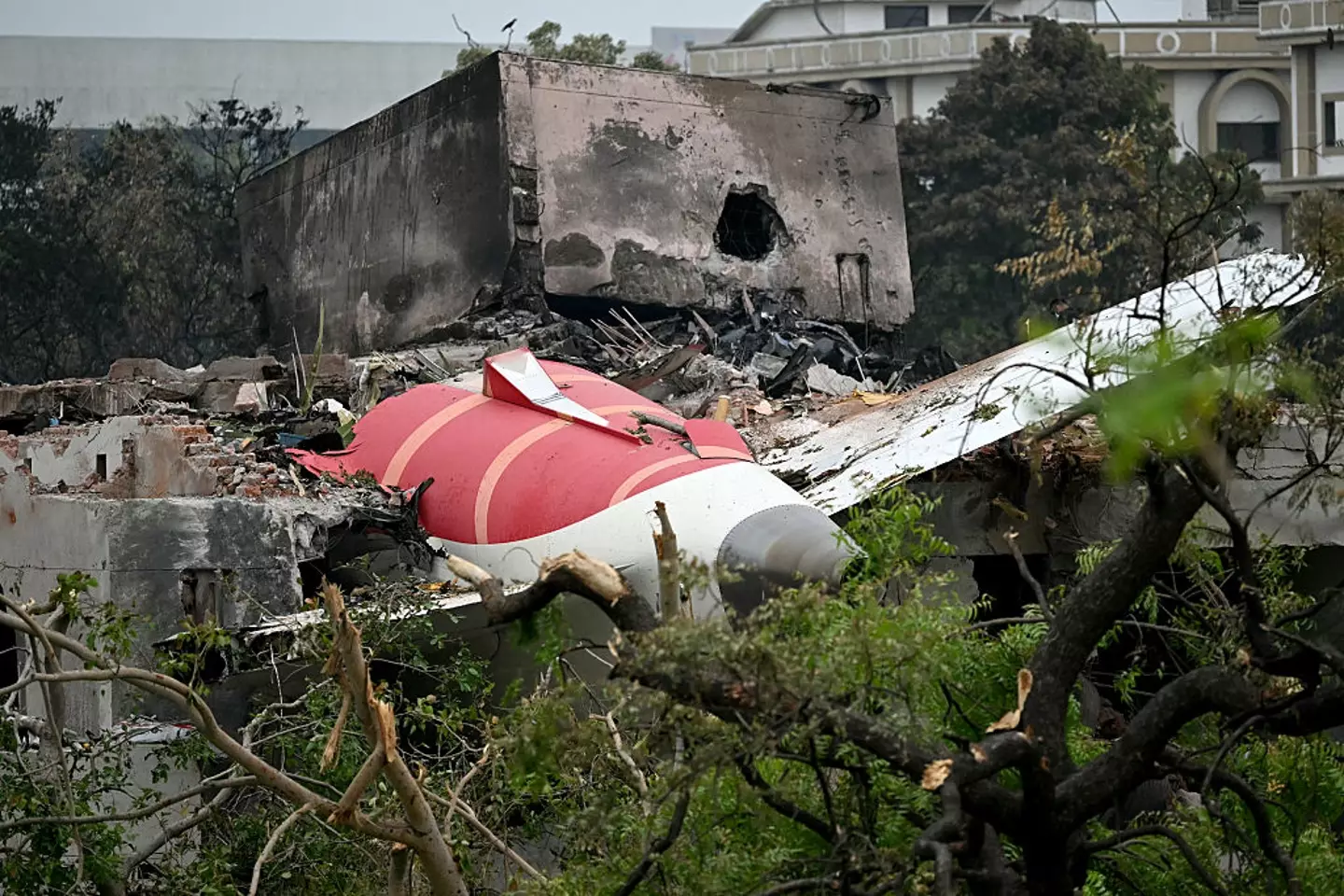

The plane came down just moments after take off (PUNIT PARANJPE/AFP via Getty Images)
Now, a commercial airline pilot and YouTuber has lifted the lid on some possible theories that could have led to the jet’s demise.
Captain Steve said he’s been studying the footage and spoke to ‘a whole bunch’ of other professional pilots and has come up with three ‘categories’ of what they think could have happened to the plane, with the first two theories ‘less likely’ than the third in his opinion.
“Remember [this] is my opinion, I’ve got some opinions based on the early findings here but rest assured, as more information unfolds, maybe the black box information comes out, we will make additions and corrections to anything that I say.”


Captain Steve has walked through three possible theories (YouTube/Captain Steeeve)
The Boeing 787 was a ‘very reliable airplane’ with a ‘great track record,’ Steve says, but it somehow lost its lift.
He explains from footage that the jet looks ‘flat’ while in the air and that the landing gear could still be seen down.
Meanwhile, there were no fires or sparks coming from the engines, which would have been a giveaway sign of engine failure or of a birdstrike.
However, Steve admits the problem could have been caused by a power loss.
“So that’s theory number one, that they lost power on both engines that caused the loss of lift.
“The airplane stopped flying,” he stated.


Vishwash Kumar Ramesh was the only survivor of the plane crash (DD India/YouTube)
As for a bird strike, as per some popular theories suggest, the pilot said it would have to involve a ‘lot of birds to foul out both engines’ to cause the crash.
“We don’t see any indications coming out of the back of the engine that that happened – you’d see flames, you’d see sparks, you’d see something as those engines were kind of coming apart,” he explained.
In the second theory, the pilot addressed concerns that the plane set off without its flaps up.
However, he ruled that out, as he said planes have two electronic checklists which are ‘integral’ – in other words, the jet won’t ‘taxi out’ let alone takeoff without the flaps deployed properly.
“So they would have had to override manually both of those checklists,” Steve continued.
He also said when the flaps are not deployed, ‘it makes a racket’ with a big red light, caution light and a ‘deafening’ horn.
“It’s inconceivable that they would have continued on with that takeoff roll with a configuration warming in front of them.”
However, while he admits ‘anything is possible,’ Steve went on to give his verdict of what he thought really happened, in his opinion.
“I think the pilot flying said to the co-pilot said ‘gear up’ at the appropriate time,” he began.
“I think the co-pilot grabbed the flap handle and raised the flaps, instead of the gear. If that happened – and this is a big if – this explains a lot of why this airplane stopped flying.”
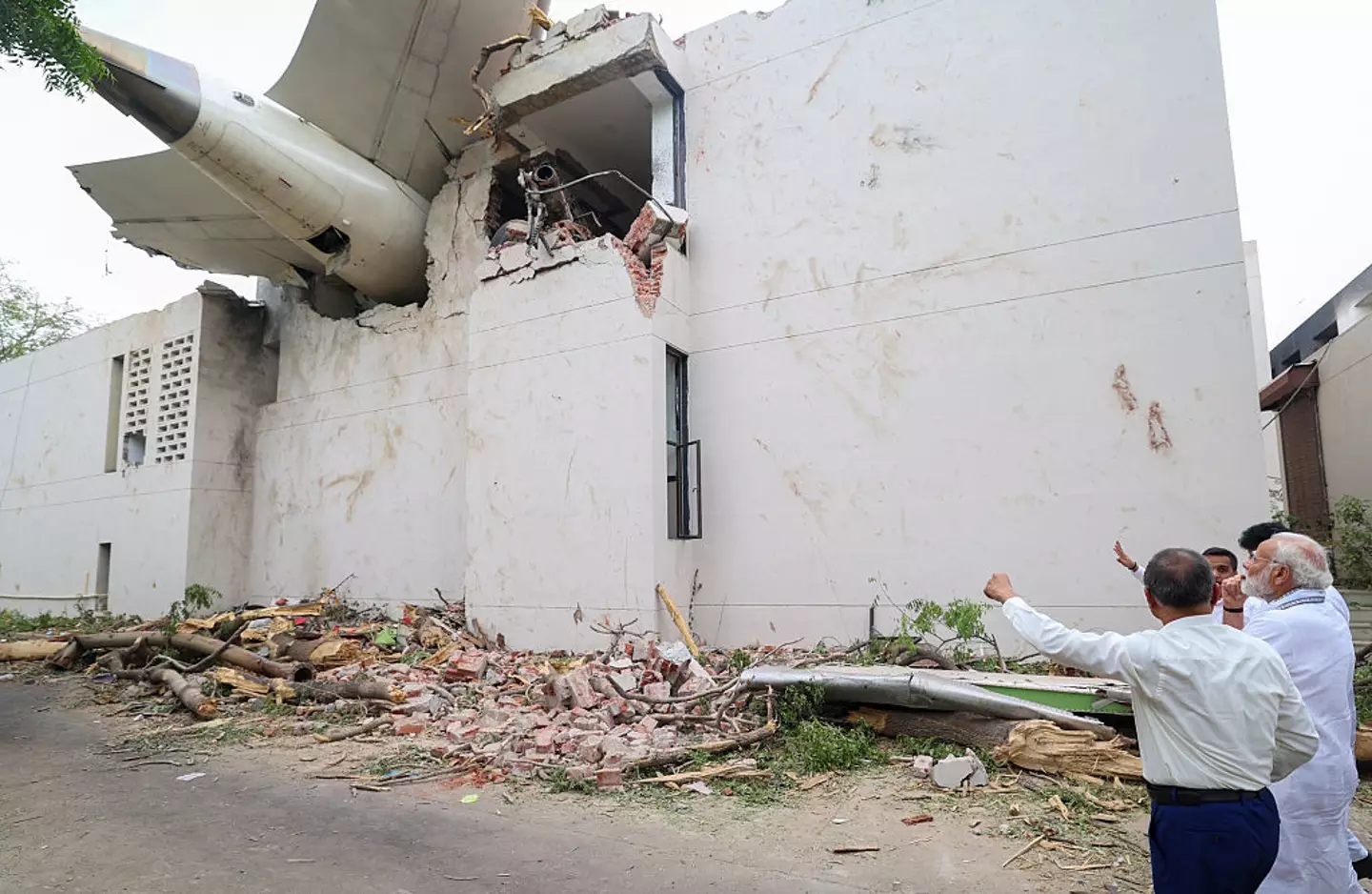

It killed more than 240 people (Press Information Bureau (PIB) / Handout/Anadolu via Getty Images)
Steve said he believes the flaps were retracted prematurely, which, with the landing gear still out and bringing ‘all sorts of drag,’ presented a ‘bad combination.’
According to the content creator, if the plane’s flaps were raised, this would have caused the flight to lose airspeed and altitude rapidly.
However, he added that at this stage, it was ‘impossible’ to know whether or not the flaps were up or out, and it would have been extremely difficult for the pilots to deal with it.
Featured Image Credit: Captain Steeeve/YouTube
Topics: Air India, Pilot, Plane, World News, India


A veteran pilot with four decades of experience says he believes the Air India crash was ‘inevitable’ and reveals what he thinks went wrong.
On Thursday (June 12), an Air India flight bound for London crashed into a residential area within a minute after taking off from Ahmedabad, killing all 241 passengers and dozens more on the ground.
Miraculously, 40-year-old British man Vishwash Kumar Ramesh crawled out from the burning wreckage that had collided into a medical college hostel before erupting into a massive fireball.
He is the sole survivor of the doomed AI171 jet.
Campbell Wilson, CEO & MD of Air India, has said the company will be issuing financial support to to those affected with an interim payment of 25 lakh rupees, or approximately £21,000 (around $28,000), to each of the families of the deceased and the survivors.
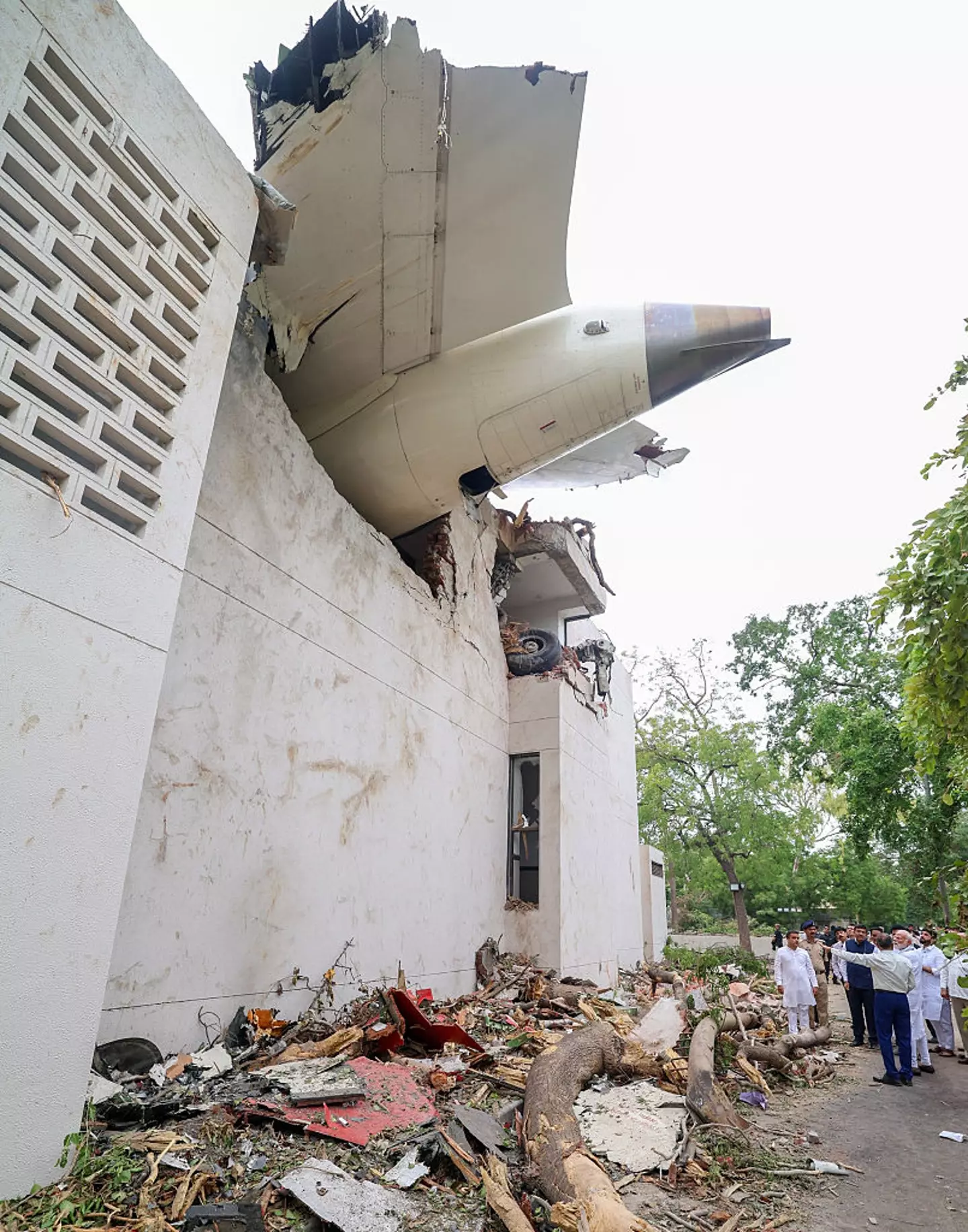

The jet killed all but one passenger and more on the ground (Press Information Bureau (PIB) / Handout/Anadolu via Getty Images)
Since the airplane came down on Thursday, the authorities confirmed its black box has been recovered from the crash site and an investigation is underway to determine what happened.
However, expert pilots with decades of experience under their belts have been speaking out with their theories over what they believe happened.
Ross Aimer, who worked for top airlines including United Airlines for 40 years, told The Express that he’s not ‘surprised’ by the crash, citing issues with the Boeing jet.
Aimer said: “I’m shocked, but knowing some of the issues with the 787, I’m not that surprised.
“It was bound to happen.”
The crash is the first involving the specific model since it was introduced in 2011, however, the Federal Aviation Administration says it has had to investigate several concerns over the years.


The wreckage in the residential area near Ahmedabad (SAM PANTHAKY/AFP via Getty Images)
The only insight available for the Air India crash is its takeoff footage – and the fact that the captain, Sumeet Sabharwal, had called out down his radio: “Mayday […] no thrust, losing power, unable to lift.”
Aimer, from California, added that it’s ‘way too early to speculate’ based on this information.
“There’s no way we know enough to even think about what may have gone wrong, but I saw the initial video of the takeoff,” he continued. “The aircraft was full of fuel and bound to Gatwick. It’s a tragedy, but we have no idea what may have caused the airplane to crash.
“Looks like the weather may not have been an issue because you probably saw the video, it’s in clear skies. The only thing I could think of is possibly an engine failure, because the aircraft sinks on takeoff. It’s at its highest gross weight at that time.”
His comments come as commercial airline pilot, Captain Steve, took to YouTube to walk through three possible theories, from power loss to the ‘unlikely’ scenario that the jet managed to take off without its flaps up.
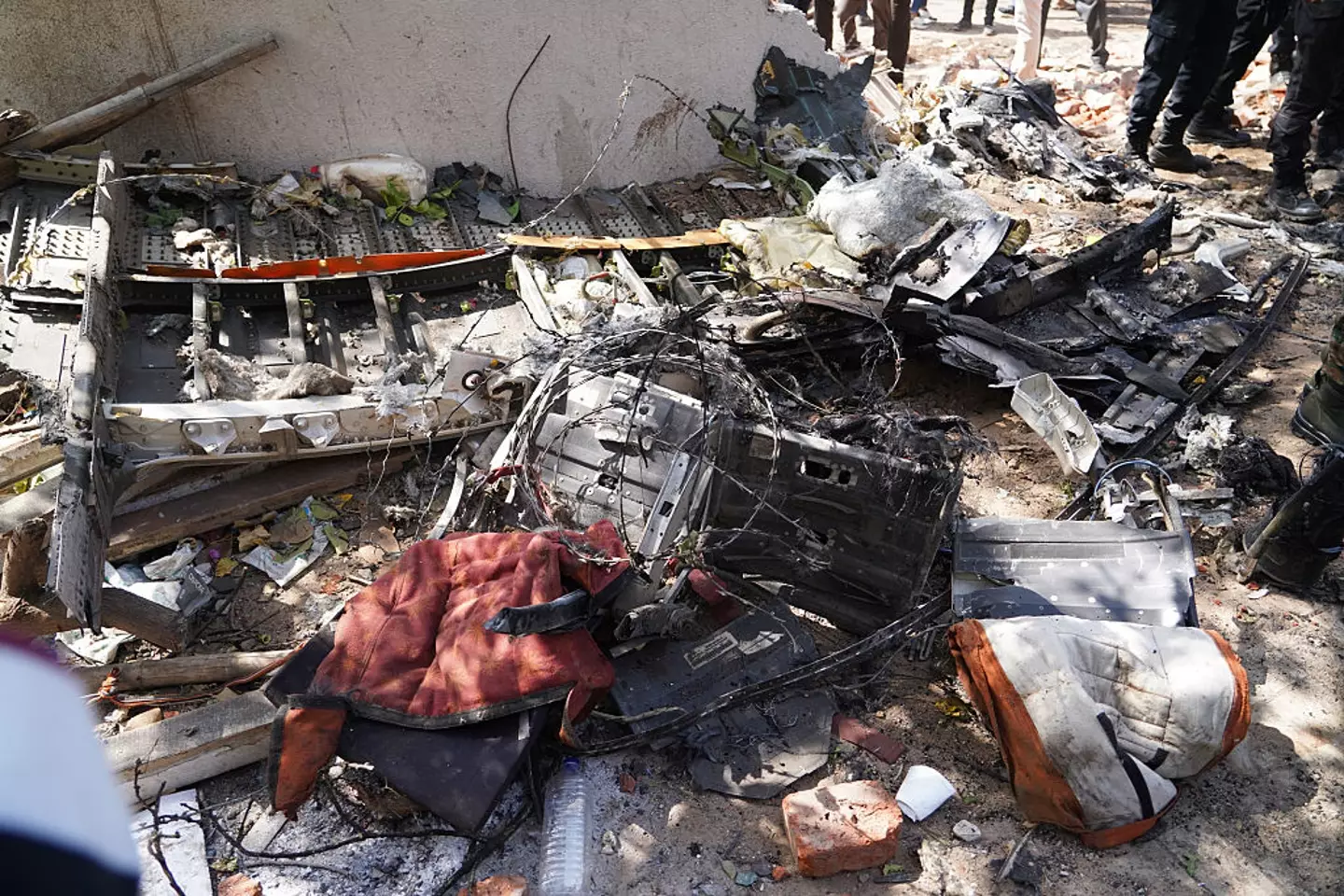

The jet was engulfed by a huge fireball when it hit the buildings (Siddharaj Solanki/Bloomberg via Getty Images)
Steve said it is ‘inconceivable’ that the jet took off without the flaps, stating the pilot would have had to manually override checklists and ignore a ‘racket,’ with a big reg light, caution light and ‘deafening’ horn.
Aimer seemed to agree with the flaps theory, adding: “”It looks to me like that aircraft basically sank into the ground. I don’t know about the flaps, but the 787 is perhaps the most advanced technology available at this moment.”
The veteran flyer also said he suspects the authorities might consider grounding the jet.
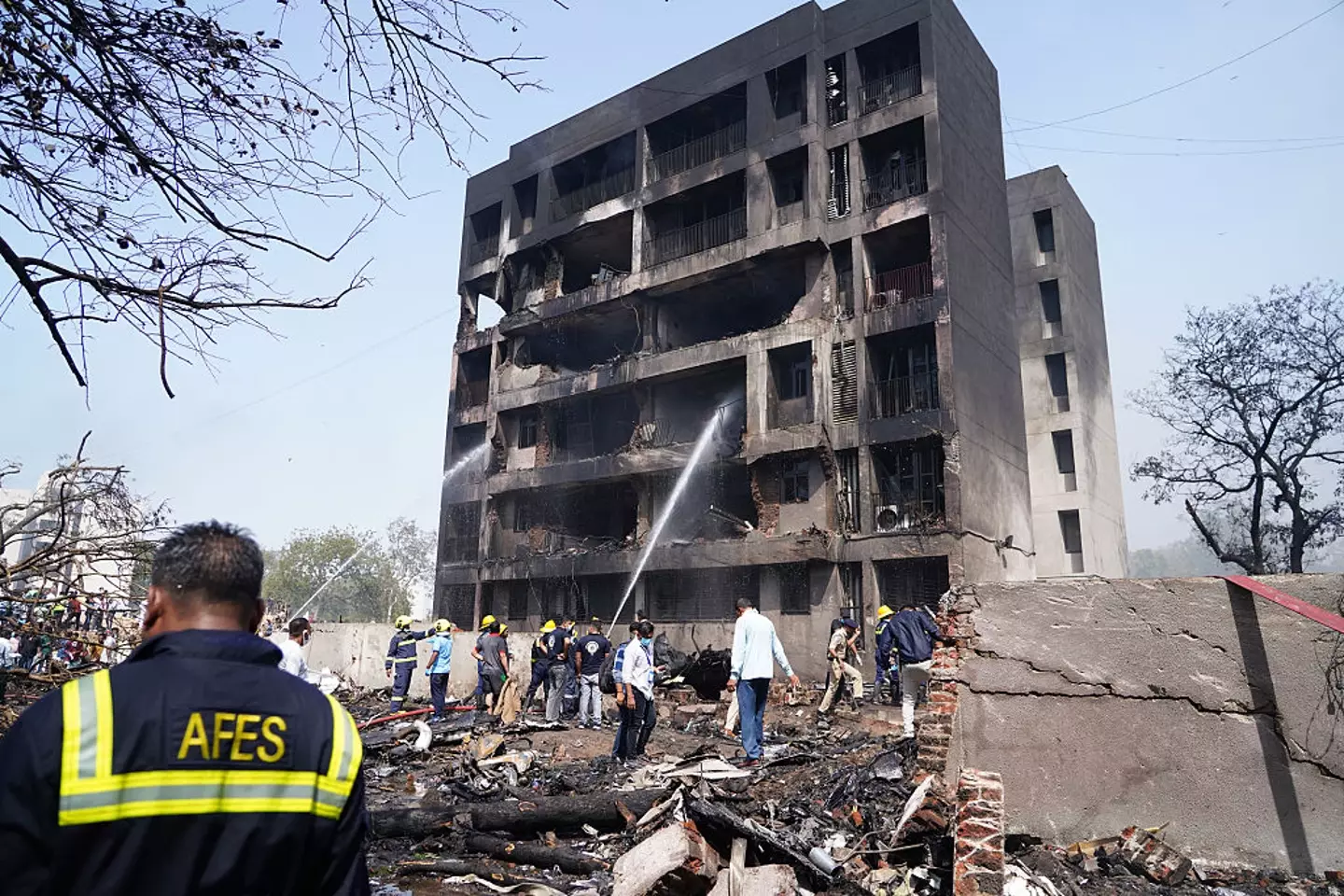

The devastation from the Air India jet has been widespread (Siddharaj Solanki/Bloomberg via Getty Images)
“Air India may have had the Rolls-Royce Trent engine option on it. There was some controversy on that engine itself. It’s called the Trent engine, and it had been grounded for a while,” he explained. “It had issues with corrosion and cracks within the engine. So it’s not only the aircraft itself, it’s a possibility that there was an engine issue too. I’m sure the authorities will look into this. In the past we’ve had engines and aircraft grounded, and I’m sure if they find out that there are any issues to be looked at, they will think about grounding the airplane.”
He concluded: “To make a blanket statement that the aircraft is not safe would be irresponsible. But I’m not surprised, because we know there were a lot of problems with this aircraft, and they continue to have issues with manufacturing.”
“I don’t blame people being leery about aviation after all these crashes that are happening.”
Featured Image Credit: Getty Images/SAM PANTHAKY
Topics: Air India, Pilot, India, World News, Plane


The sole survivor of the Air India plane crash has revealed exactly how he got out during the disaster that killed more than 200 people.
On Thursday (June 12), a 40-year-old British man miraculously managed to walk away from the wreckage of the Air India flight that killed all other 241 passengers and crew, as well as dozens more on the ground.
The doomed AI171 jet had departed from Ahmedabad and was bound for London Gatwick when it crashed less than a minute after takeoff into residential buildings.
The Boeing 787-8 was carrying 242 passengers and crew members on board, comprised of 169 Indian nationals, 53 British nationals, one Canadian national, and seven Portuguese nationals.
Now, Vishwash Kumar Ramesh, who was sat in seat 11a on the plane and stands as the sole survivor, has revealed how he managed to get out of the wreckage.


The jet crashed into a building just moments after take off (SAM PANTHAKY/AFP via Getty Images)
Speaking to the Hindustan Times from a hospital bed in Asarwa, Ahmedabad, Ramesh said: “Thirty seconds after takeoff there was a loud noise and then the plane crashed. It all happened so quickly.
“When I got up, there were bodies all around me. I was scared. I stood up and ran. There were pieces of the plane all around me. Someone grabbed hold of me and put me in an ambulance and brought me to the hospital.”
He added to Indian state media DD News exactly how he managed to free himself.
Ramesh said: “I managed to unbuckle myself, used my leg to push through that opening, and crawled out.”
He also recalls how the lights inside the aircraft ‘started flickering’ moments after take off.
Then, seconds later, he said it was like the plane was ‘stuck in the air’.
“The lights started flickering green and white…suddenly slammed into a building and exploded,” he added.


Footage shows he managed to escape the wreckage (Republic)
The jet crashed into a building used as accommodation for doctors at the Byramjee Jeejeebhoy Medical College and Civil Hospital.
The father-of-one from Leicester said the part of the plane he was sat in was near to the ground and had not made contact with the building.
“When the door broke and I saw there was some space, I tried to get out of there and I did,” he continued.
“No one could have got out from the opposite side, which was towards the wall, because it crashed there.”
Footage which has since gone viral then shows Ramesh walking away from the wreckage towards an ambulance.


He recalled how he managed to survive (DD India/YouTube)
“I saw people dying in front of my eyes – the air hostesses, and two people I saw near me,” he told the Indian broadcaster.
“For a moment, I felt like I was going to die too, but when I opened my eyes and looked around, I realised I was alive.
“I still can’t believe how I survived. I walked out of the rubble.”
Doctor Dhaval Gameti, who it treating Ramesh, said: “He was disorientated, with multiple injuries all over his body. But he seems to be out of danger.”
The cause of the crash is still being investigated, as officials say the jet’s black box which has been recovered from the crash site will be analysed.
Police have also not yet given a final figure of fatalities, from the plane and those on the ground below.
India’s Prime Minister Narendra Modi visited the site and said in a statement that the country is ‘devastated by the air tragedy’.
He added: “The loss of so many lives in such a sudden and heartbreaking manner is beyond words. Condolences to all the bereaved families. We understand their pain and also know that the void left behind will be felt for years to come. Om Shanti.”
Featured Image Credit: DD News
Topics: Air India, Plane, World News, India
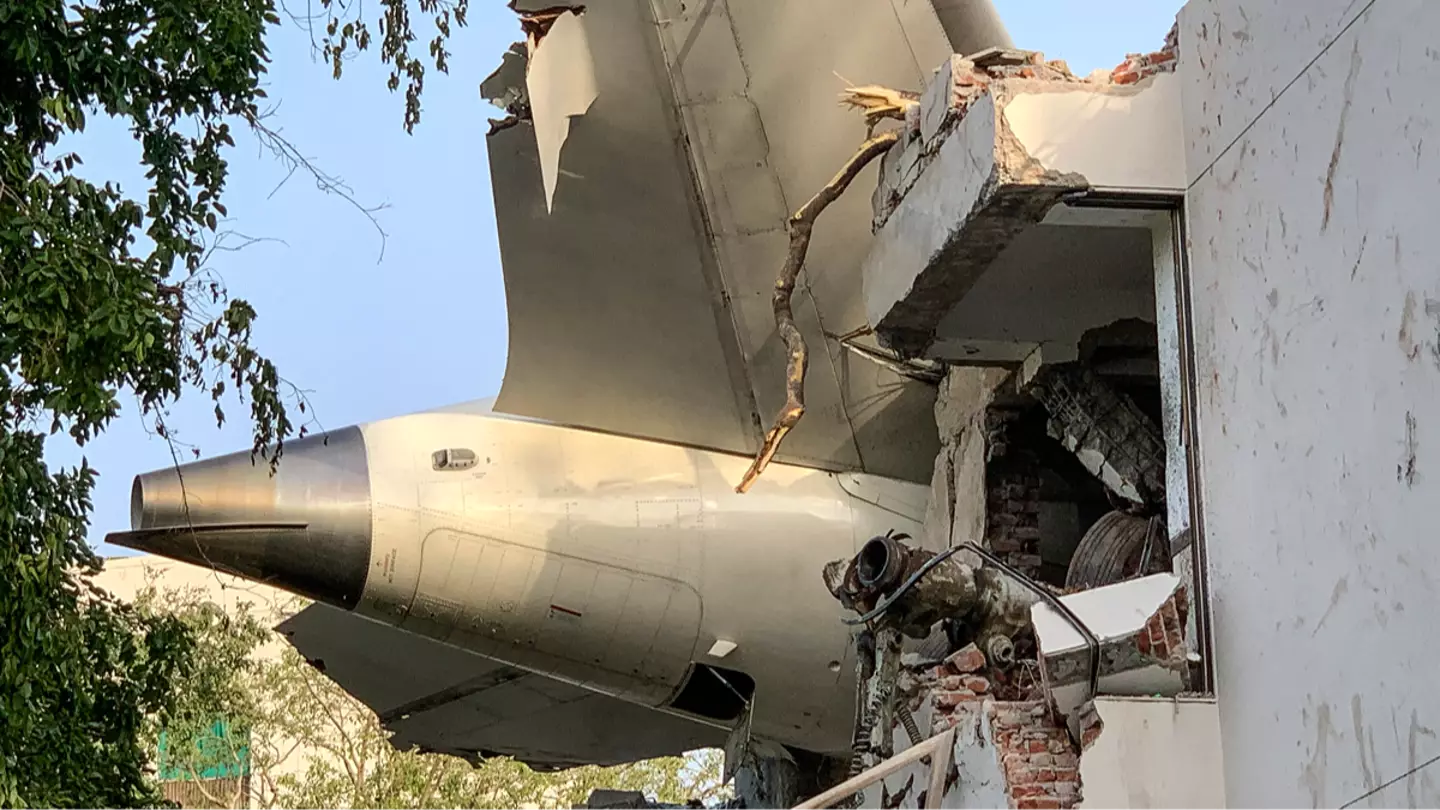

The Air India plane that plummeted to the earth with 242 people on board has sparked a lot of questions.
On June 12, an Air India flight left Ahmedabad and was heading for London Gatwick before it suddenly started to fall out of the sky.
Video footage has shown the rapid descent of the plane and upon impact, there was a massive explosion, and plume of smoke was seen rising into the sky.
According to the airline, there were 242 passengers and crew members on board.
Air India added: “Of these, 169 are Indian nationals, 53 are British nationals, one Canadian national and seven Portuguese nationals.”
Authorities have confirmed that the plane crash landed only four miles away from the airport after only reaching a height of around 625 feet.
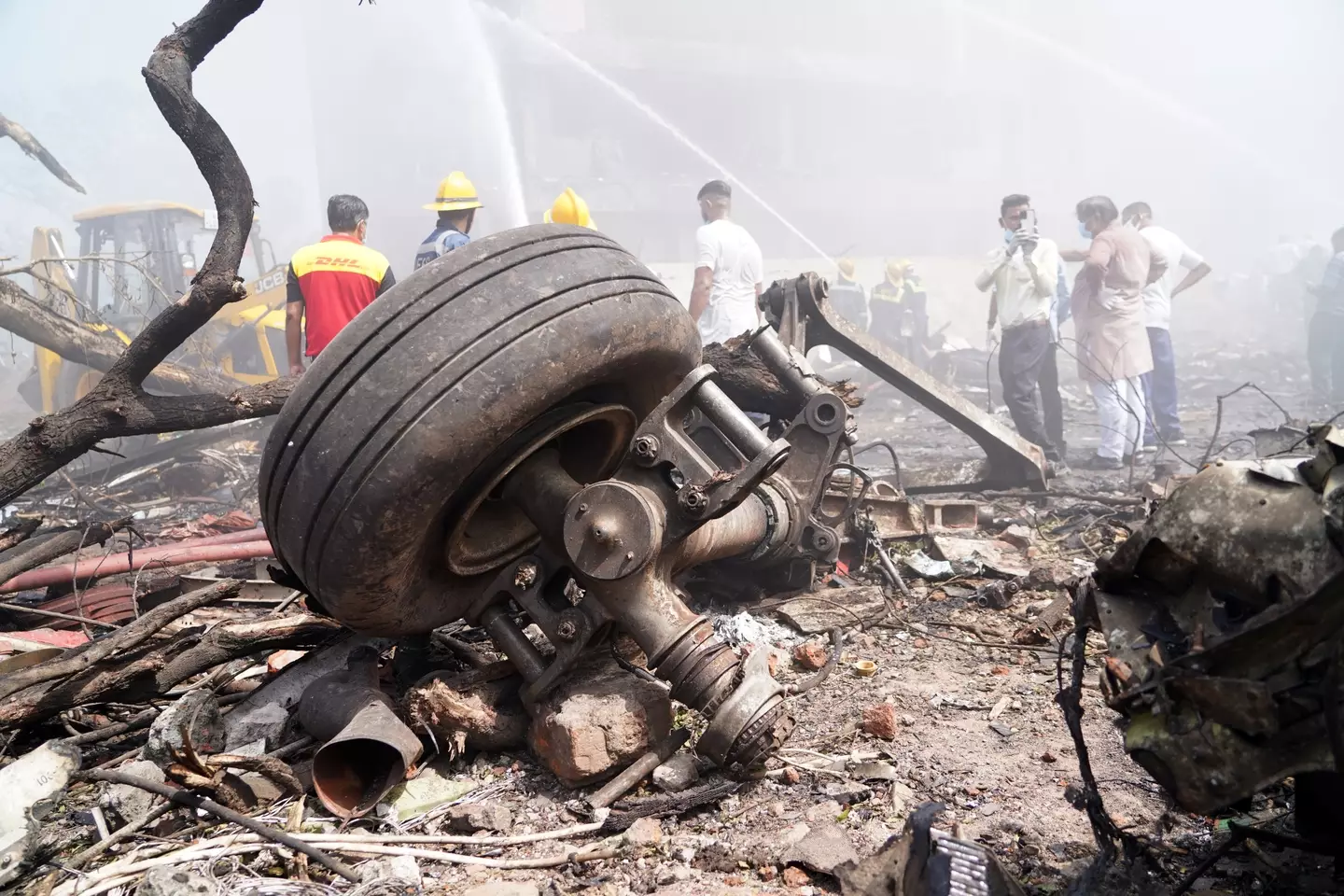

The plane crash landed a few miles from the airport only minuntes after takeoff (Siddharaj Solanki/Bloomberg via Getty Images)
There have also been reports of one sole survivor from the plane crash, who is still currently in hospital.
An investigation has been launched into what caused the tragedy, but an aviation expert has weighed in on the potential issues that may have arisen.
Former British Airways pilot Alastair Rosenschein spoke to Sky News after analyzing footage of the plane crash.
Rosenschein pointed out some clear issues that he says may have contributed to the plane failing to take off properly.
He said: “It’s clearly got its [landing] gear down and that is not correct… it should have been up. And from the video… it’s not immensely clear… but it does look like the aircraft didn’t have its take-off flap setting.”
The expert emphasized the importance of the wing flaps and how they need to be set correctly to extend the shape of each wing and ultimately give the plane the extra lift needed at lower speeds to take off and climb.
He did note that, at this time, he is only speculating that this could have been a factor.
Authorities are currently still investigating the cause of the plane crash and have not released an official statement on the root cause.


Aurthorities are currently investigating the cause of the crash (Siddharaj Solanki/Bloomberg via Getty Images)
He added: “[This] could explain why the aircraft came down [as the] aircraft would not have been able to maintain flight.
“The video is not that clear, but it [the flaps setting] doesn’t look right to me.
“The altitude of the aircraft isn’t right either and the aircraft seems to be descending rather than climbing.
“It does look like it’s an aerodynamic issue because of not having the right flaps setting on take-off.”
His comments come after authorities have revealed the alleged final words of the pilot who was flying the plane.
The captain, Sumeet Sabharwal, called out down his radio: “Mayday […] no thrust, losing power, unable to lift.”
Sabharwal reportedly had 22 years worth of experience and had raked up 8,200 hours in the air.
